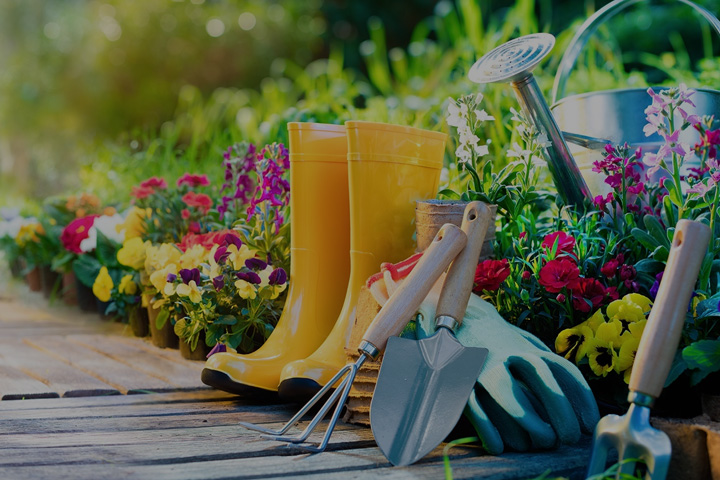
Our top tips on how to get your garden prepared for spring and summer.
- Spring clean: After months of neglect and being starved of sunshine, your garden will be needing a much needed tidy up. It is important to do a very thorough job by clearing away any debris including dead sticks, leaves and any rubbish that may have appeared. Use a rake to go through the plant beds to highlight any weeds that need pulling out. If you have a greenhouse, it will need a good wash too. Use disinfectant on the floor, benches and the inside of the glass to kill overwintering pests and diseases. It’s very important to start with a clean canvas so it may take a while but it is essential when preparing for warmer months.
- Garden waste: Once your spring clean is done, you will have a great starting point for a compost bin. Gather all of the natural waste that you have collected to put into the bin and make sure that you have a good mixture of grass clippings, vegetable peelings, paper and wood pruning. The compost bin will be very beneficial to your plants as well as an easily accessible area in which you can gather your garden waste without any trips to the tip!
- Fertilise the grass: After a big tidy up you will be able to see the state of your lawn much clearer. It is likely that after a very cold winter with little sunlight, it will need a lot of work to get it back to its nice green, healthy state. The state of the grass is important to secure a successful bloom during the spring and summer months. In mid-spring (often late March to April), use a proprietary spring or summer lawn fertiliser at the manufacturer’s recommended rates. Feeding the lawn will increase vigour and help prevent weeds and moss from establishing. Apply fertilisers when the soil is moist, or when rain is expected.
- Water butts: Installing water butts in your garden not only helps the environment but some plants (for example, camellias and blueberries) benefit much more from rain water than tap water. To get the most out of your water butt, install it under a drainpipe to provide a very valuable source of natural rain water. If you already have water butts around your garden, be sure to clear out any dead leaves or mouldy bits that may have accumulated over the winter.
- Plan ahead: Next, order your summer flowering bulbs and seeds. Plants such as lilies and gladiolus can be planted in the spring and will be ready to show off their bright colours in time for the summer. Now is the time to rearrange your garden if you fancy a change! Before planting your new seeds, move any shrubs that may not be working in particular areas of your garden. Some may be too close to the fence or other plants and shrubs. When moving shrubs it’s important to plant them at the same level in the ground that they were previously and water them straight away.
- Take control of those pests: By taking control of any pests that you may have in your garden sooner rather than later, you will save yourself a lot of time. Take an extra close look at your plants to try and spot any slugs and snails that have been sheltering in your garden throughout winter. There are plenty of natural solutions that you can use to deter pests instead of covering your garden in chemical deterrents. Slugs do not like crushed egg shells, start collecting now and line your plant beds with them when your seeds start to flower.
- Start digging: Cultivated soil will help your plants thrive. Cultivating soil simply means to dig up your soil, turn it and drop it back down into the same hole. Do this over all your flower beds. If you have a lot of spare time in which you do your gardening, set aside a couple of hours to prepare your soil more thoroughly by digging an entire trench down the plant bed, and transport soil from one end to the other and vice versa. This will fully refresh the soil and give it some aeration.
- Keep tools clean: Before all the hard work kicks in, now is the time to ensure that all of your gardening tools and equipment are nice and clean and sharp ready for the warmer months ahead. It is true that clean tools last longer. Adjust the garden hose to maximum pressure to wash away average garden soil and a hard bristle brush for heavier clay soil. Once clean, apply oil to your tools to prevent them from rusting. It is best to rinse your tools regularly after use in order to keep them in the best condition.





